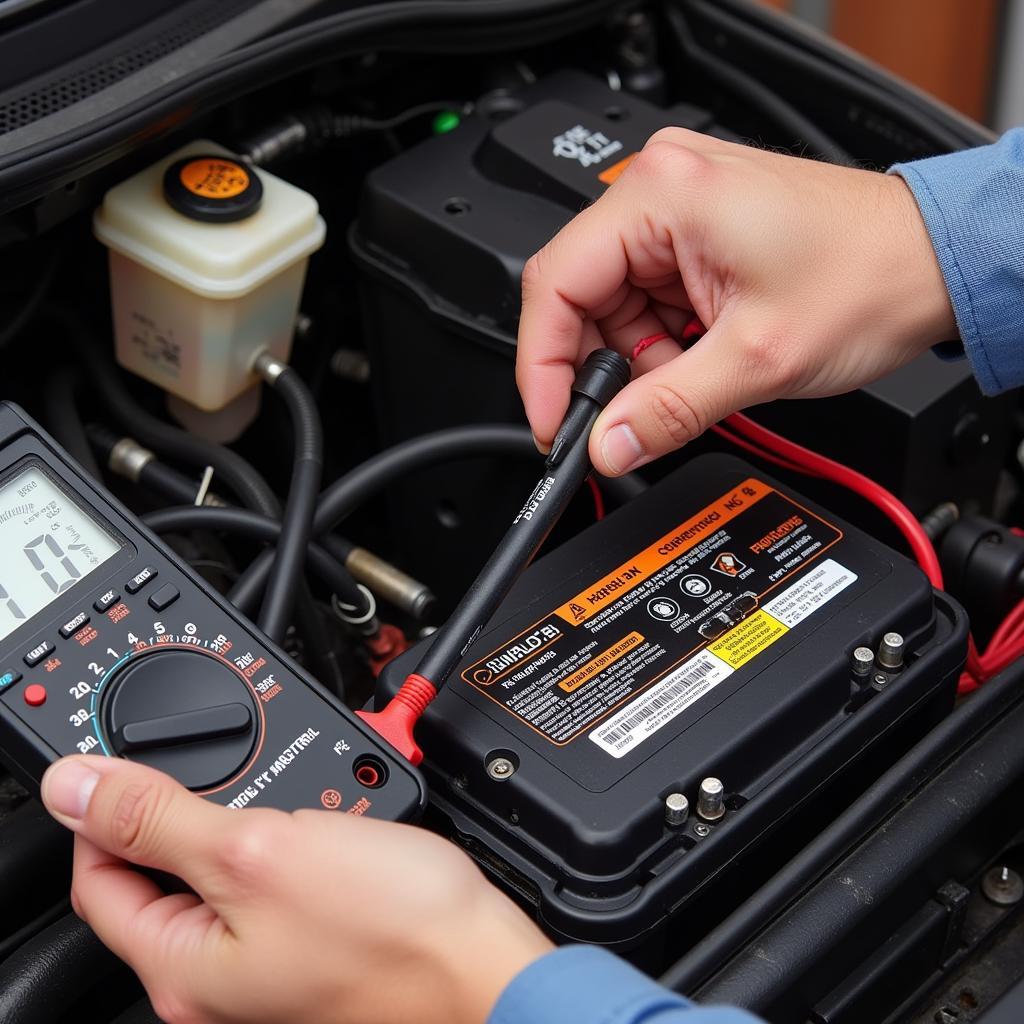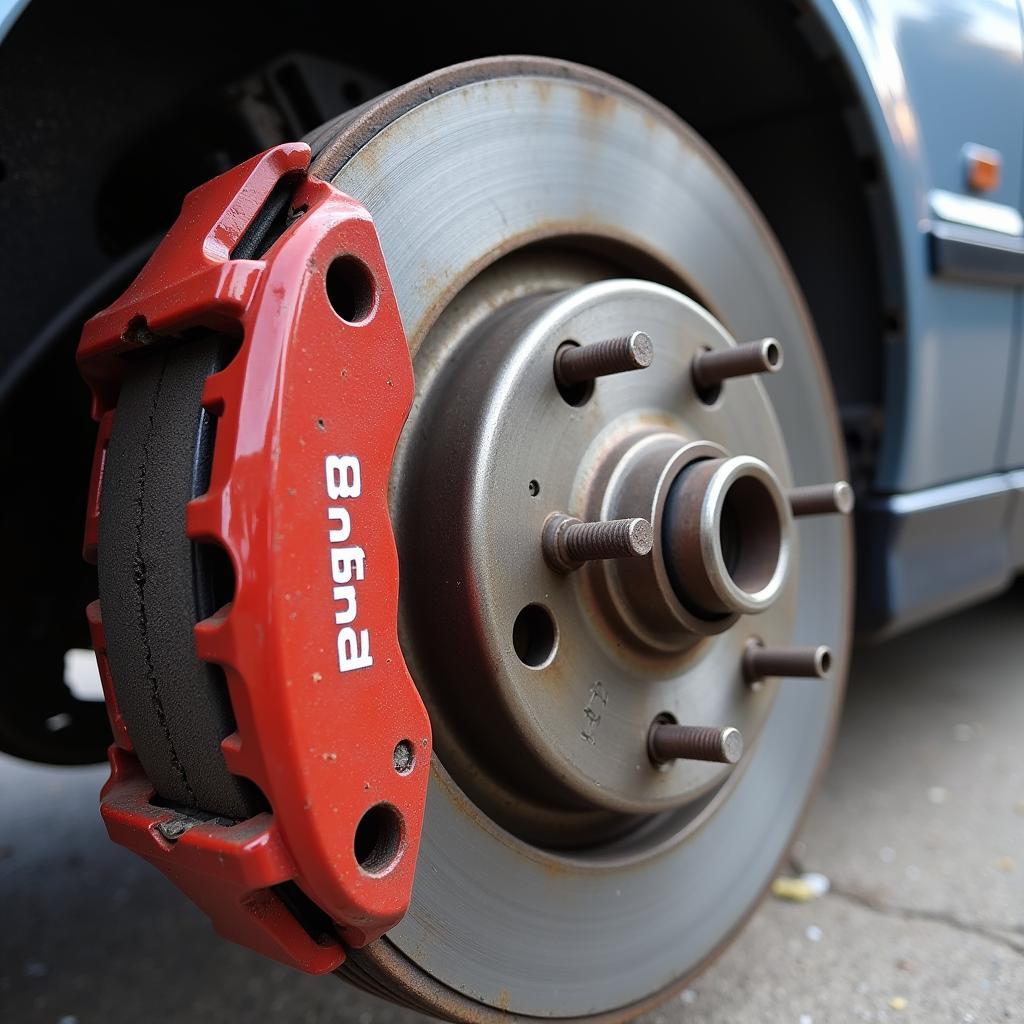A dead car battery is a frustrating experience. If your car battery is getting drained, it can disrupt your daily routine and lead to unexpected expenses. This guide explores the common causes of car battery drain, offers diagnostic tips, and provides solutions to help you get back on the road. car battery keeps getting drained Understanding why your car battery is constantly dying is crucial to preventing future occurrences.
Why is My Car Battery Drained?
Several factors can contribute to a car battery getting drained. Identifying the root cause is the first step towards a solution. Some common culprits include parasitic draws, faulty alternators, extreme temperatures, old age, and even leaving your lights on. Don’t panic; most of these issues are easily diagnosable and repairable.
Parasitic Draws: The Silent Killers
Parasitic draws are electrical components that continue to consume power even when the car is off. These can range from faulty interior lights and glove box lights to more complex issues with the car’s computer or alarm system.
 Car Battery Parasitic Draw Test
Car Battery Parasitic Draw Test
Faulty Alternator: The Powerhouse Problem
The alternator is responsible for recharging the battery while the engine is running. A failing alternator can’t effectively recharge the battery, leading to a drained battery.
Extreme Temperatures: The Weather Effect
Both extreme heat and cold can affect a car battery’s performance. Heat can accelerate the chemical reactions within the battery, shortening its lifespan. Cold temperatures can reduce the battery’s capacity to hold a charge.
Diagnosing a Drained Car Battery
Diagnosing a drained car battery involves several steps. First, check for the obvious: Did you leave your lights on? Is there a dome light stuck on? Next, you can test the battery’s voltage using a multimeter. A fully charged battery should read around 12.6 volts.
How to Test Your Car Battery
Testing your car battery is a straightforward process. You’ll need a multimeter, which is an inexpensive and readily available tool. Simply connect the red lead of the multimeter to the positive terminal of the battery and the black lead to the negative terminal.
changed headlight now car wont start If your battery tests low, you may want to check other components, like your headlights.
Quote from John Smith, ASE Certified Master Technician: “A simple voltage test can save you a lot of time and money. It’s the first thing I check when a customer complains about a drained battery.”
Checking the Alternator
If the battery voltage is low, the next step is to check the alternator. A running engine should produce a voltage reading of around 14 volts at the battery terminals.
battery full but car not starting Even with a full battery, your car might not start if there are underlying issues.
Solutions for a Drained Car Battery
Once you’ve identified the cause of the drain, you can implement a solution. If the problem is a simple parasitic draw, like a glove box light, the fix is easy. However, a failing alternator or a dead battery will require replacement.
Jump Starting Your Car
if your car battery is dead will it recharge itself A dead battery won’t recharge itself. You’ll need to jump-start it or have it charged.
If you find yourself with a drained battery, jump-starting your car is a temporary solution. Remember to connect the jumper cables correctly, red to positive and black to negative.
Quote from Jane Doe, Lead Automotive Instructor: “Safety is paramount when jump-starting a car. Always ensure the cables are connected correctly to avoid damage to your vehicle’s electrical system.”
new battery in car keeps dying If a new battery keeps dying, a parasitic draw is a likely culprit.
Conclusion
A car battery getting drained can be a nuisance, but with the right knowledge and tools, you can diagnose and resolve the problem. By understanding the common causes, following the diagnostic tips, and implementing the solutions outlined in this guide, you can keep your car running smoothly and avoid the frustration of a dead battery. Regularly checking your battery’s health and addressing any potential issues promptly can save you time, money, and the inconvenience of being stranded with a dead battery. Remember to prioritize safety and seek professional assistance when needed.
FAQ
-
How long does a car battery last? Typically, a car battery lasts between 3 and 5 years.
-
Can I drive with a drained battery? Driving with a completely drained battery is not possible. A significantly drained battery can strain the alternator.
-
How can I prevent my car battery from draining? Regularly check for parasitic draws, ensure the alternator is functioning correctly, and limit short trips.
-
What are the signs of a bad alternator? Dim headlights, flickering interior lights, and a whining noise from the engine compartment are signs of a failing alternator.
-
How much does a new car battery cost? The cost of a new car battery varies depending on the type and brand, but typically ranges from $50 to $200.
-
Can a car battery drain overnight? Yes, a parasitic draw or a failing battery can drain a car battery overnight.
-
How do I know if my car battery needs replacing? A slow engine crank, dim headlights, and a battery warning light on the dashboard are indicators of a failing battery.


